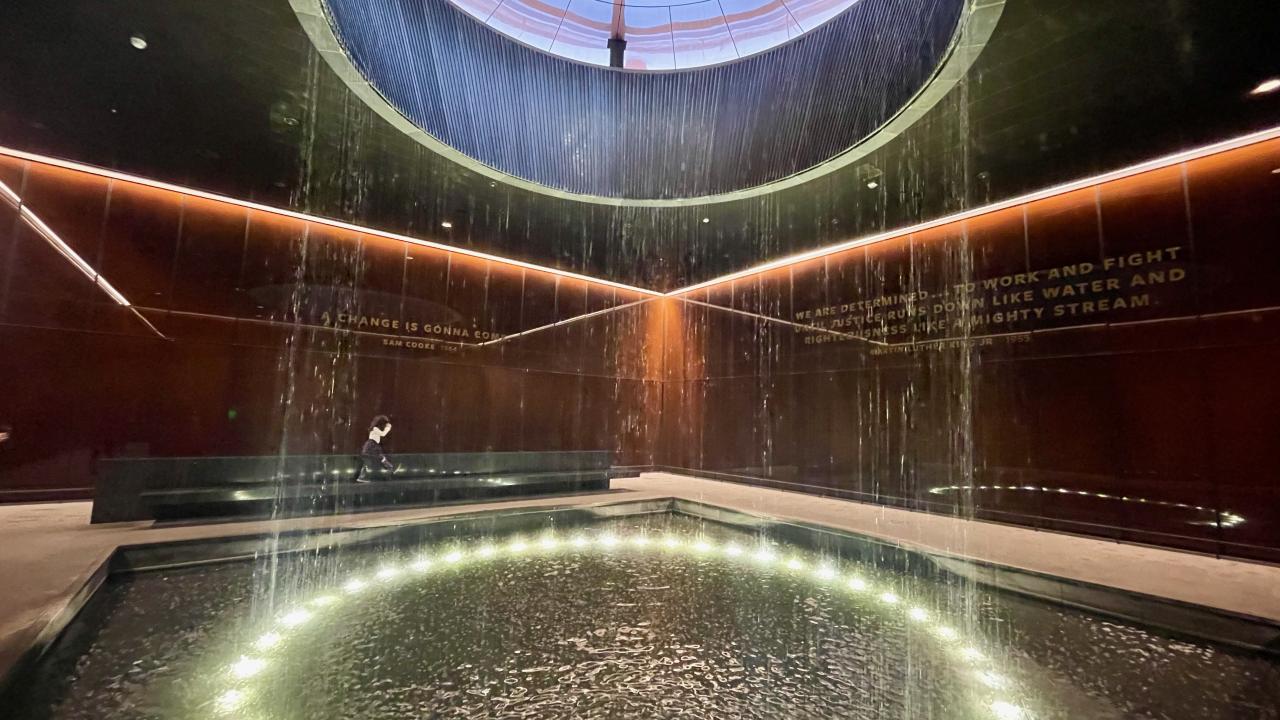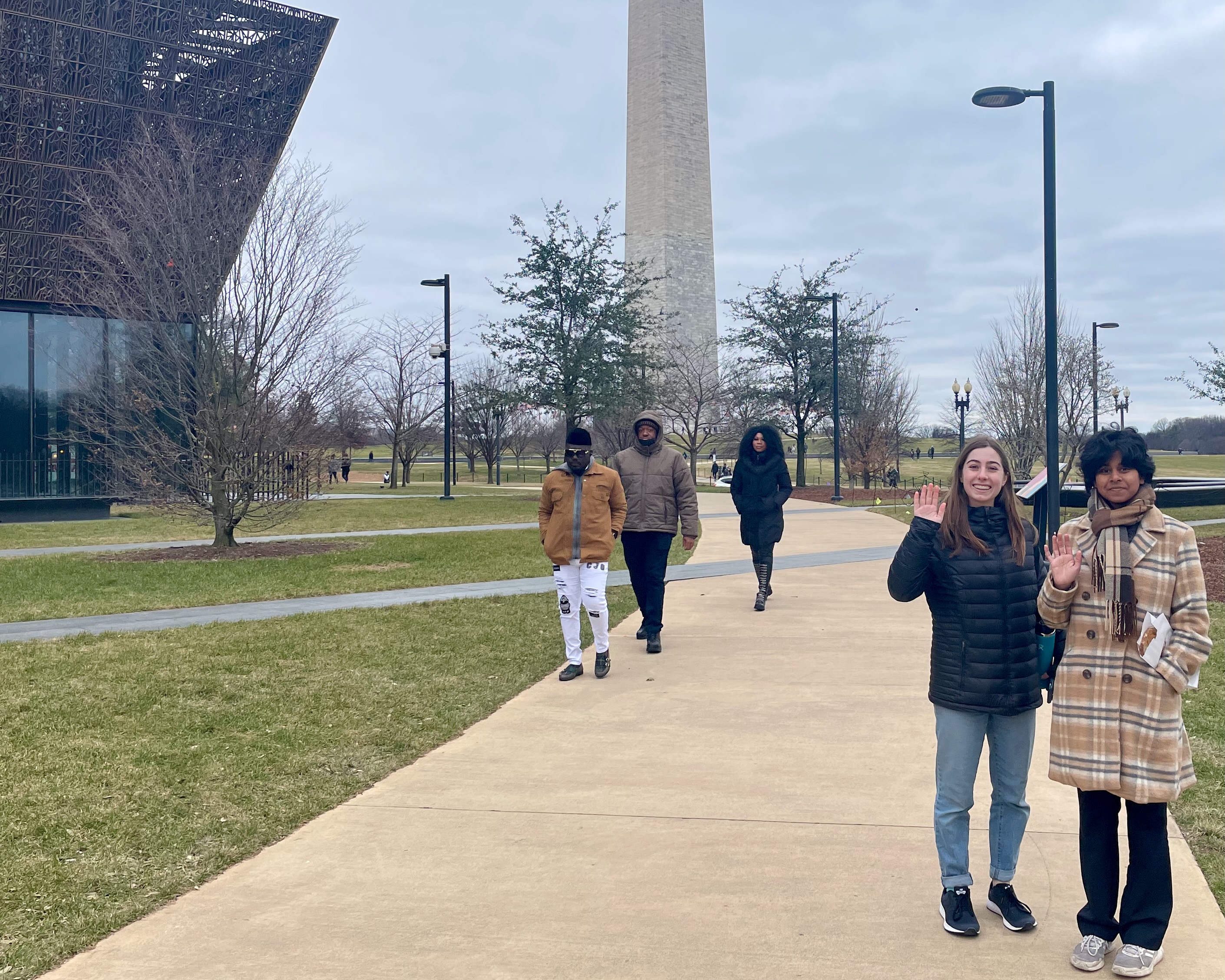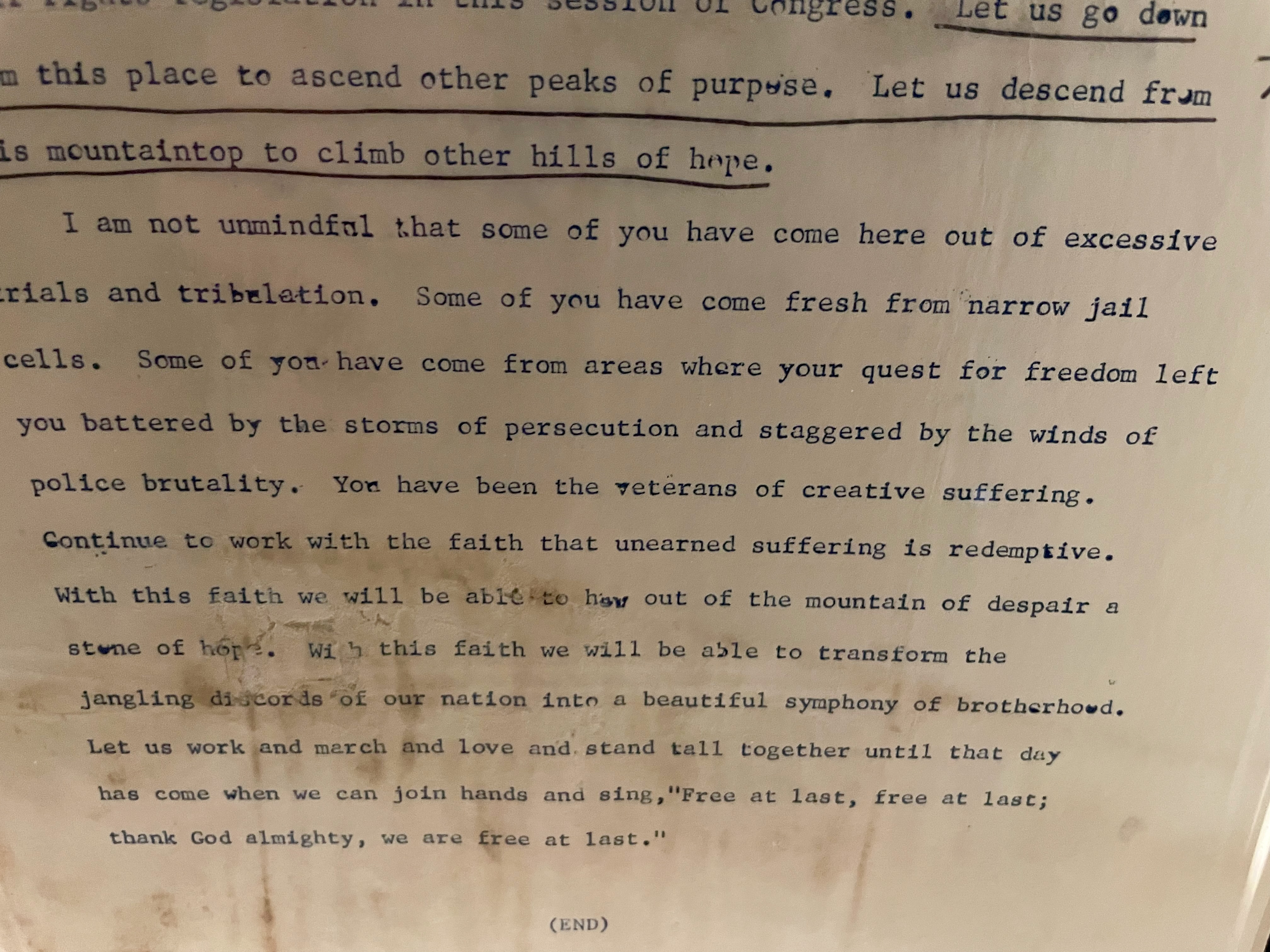
MLK Day 2023 "The audacity to believe that peoples everywhere can have three meals a day for their bodies, education and culture:" Human Rights and America's Civil Rights Journey
A visit to the National Museum of African American History and Culture spurs reflection on the fragility of civil rights
Quick Summary
- MLK Day 2023 is a moment to remember how America's civil rights leaders emphasized the connections between political, economic and cultural human rights.
British-Ghanian architect David Adjaye’s design of the National Museum of African American History and Culture on the National Mall in Washington, DC grabs you by both shoulders and demands that you not look away as it draws you down into the painful story at the heart of America’s past.
I was in DC this last weekend for meetings on developing Article 26 Backpack 2.0 with the leadership team of the Backpack Guide Collective and finally secured timed-entry tickets – over a million people visit the museum a year and I’ve tried many times before to get in.

On Saturday it was filled mostly with families who moved from exhibit to exhibit with the solemnity you don’t see in the other institutions of the Smithsonian. Even teens had put their phones away. With them I witnessed many artifacts of a cruel history; most affecting to me were the timbers of the 18th-century sunken São José-Paquete de Africa displayed in a darkened cramped room alongside child-sized shackles.
The exhibits unfold chronologically, noting the hypocrisy of America’s founding documents and juxtapose Thomas Jefferson with Haiti’s Toussaint L’Overture whose vision of human freedom and liberty seems more consistent with our contemporary expectations from those concepts. The Civil War, the failed promises of Reconstruction, and KKK terrorism follow and then one rises along great ramps into the late-19th and 20th centuries and the evolution of Black civil society and the emergence of African American political and social activism in the era of the two World Wars.
In the room set aside for the 1960s and the Civil Rights Movement, MLK’s final draft of his 1963 “I Have a Dream Speech” is on temporary display. Here the talk stopped, and people came up to the document and reached out to touch it – even though it was under glass — and took pictures. I did both. Some paused long enough to read a few passages in quiet and then move on; others read it aloud with cracking voices. It was a chance to touch the past itself and reconnect with a moment of such promise and optimism.

In the post-Civil Rights Movement rooms, the narrative fragments and the less-remembered activism of Martin Luther King Jr. and others to confront poverty and war fades to be replaced by accounts of cultural, business and sports icons, culminating in the election of Barack Obama.
Like at all museums, curators curate through a process of leaving out much of the story. Here the story of American struggles for equality, to end slavery and confront racism unfolds in a vacuum, with little or no recognition about how those struggles were part of global movements against Apartheid, colonialism, and for Black Liberation, economic and political development.
This is perennial challenge facing the history and criticism of the Human Rights idea in the US. In the 1940s African American thinkers, WEB Du Bois, is perhaps the best example, embraced early on the possibilities of Human Rights to bring about change through global solidarity and international justice. His 1947 book: An Appeal to the World: A Statement of Denial of Human Rights to Minorities in the Case of citizens of Negro Descent in the United States of America and an Appeal to the United Nations for Redress, resonates even today but occasioned great concern at the time amongst US political leaders. Those politicians rejected a full embrace of human rights in American law, policy, and public education for reasons of race and xenophobia — a reality that required a change in strategy to a very domestic, narrow and constitutional-law based focus.
Recent events have reinforced how vulnerable what are our civil rights to whims of five black-clad justices or demagogic politicians inventing moral panics about drag queens and who can and can’t use a toilet. The human right to teach and learn the history encompassed by the museum itself is under threat around the country.
While we all rightfully remember the “I Have a Dream Speech,” from a human rights perspective, King’s 1964 Nobel Prize acceptance speech has always be more important. Here he reinforced the necessary links between peace, equality and social and economic rights: food, health, education, and culture:
I refuse to accept the cynical notion that nation after nation must spiral down a militaristic stairway into the hell of thermonuclear destruction. I believe that unarmed truth and unconditional love will have the final word in reality. This is why right temporarily defeated is stronger than evil triumphant. I believe that even amid today’s mortar bursts and whining bullets, there is still hope for a brighter tomorrow. I believe that wounded justice, lying prostrate on the blood-flowing streets of our nations, can be lifted from this dust of shame to reign supreme among the children of men. I have the audacity to believe that peoples everywhere can have three meals a day for their bodies, education and culture for their minds, and dignity, equality and freedom for their spirits.
——— University of Oslo on 10 December 1964.
